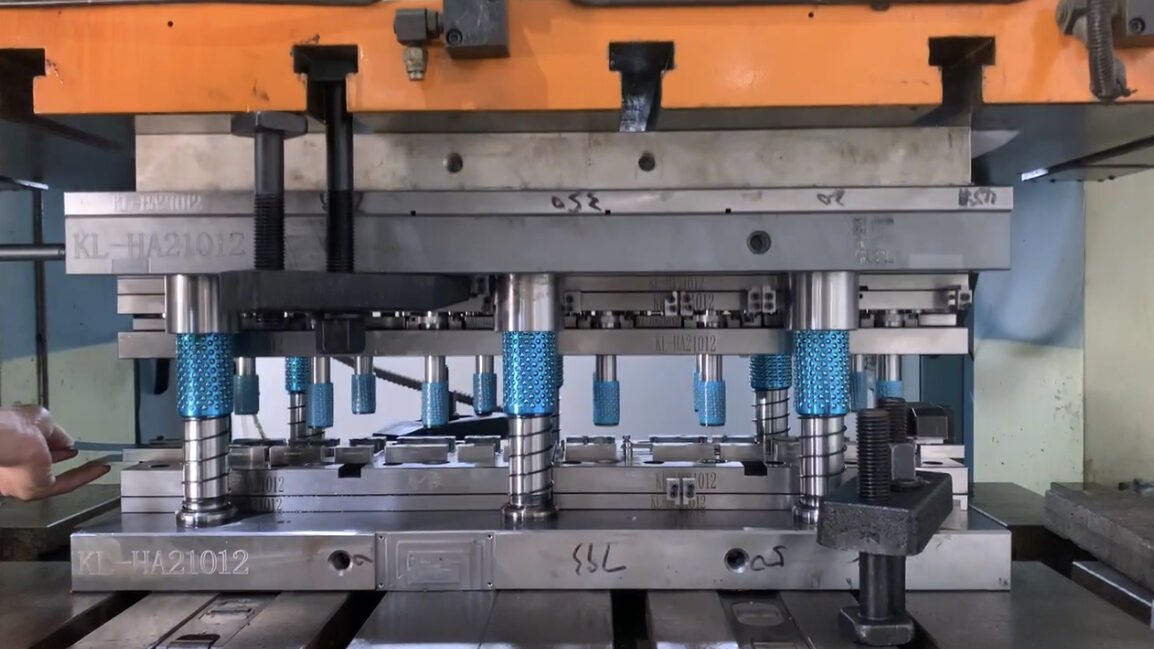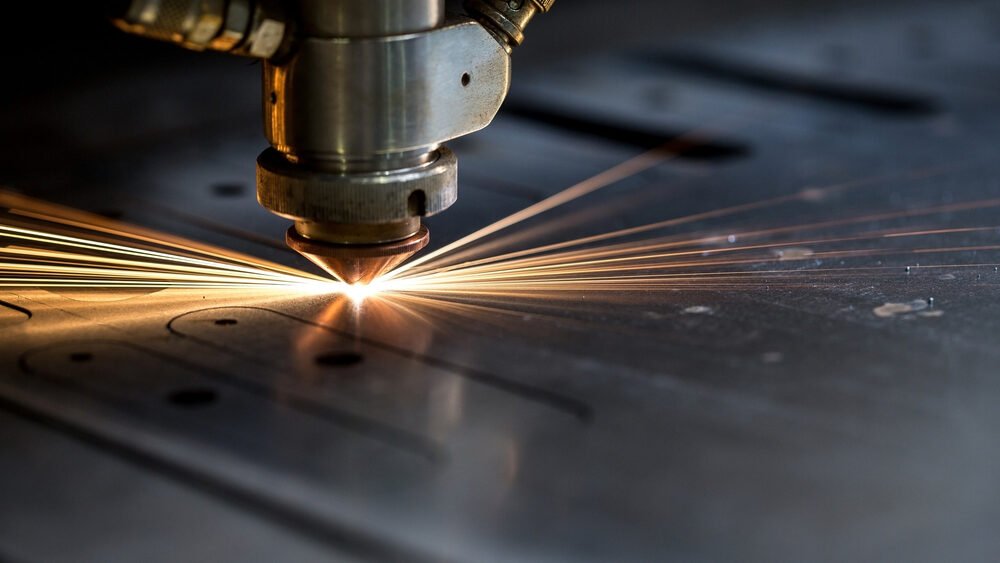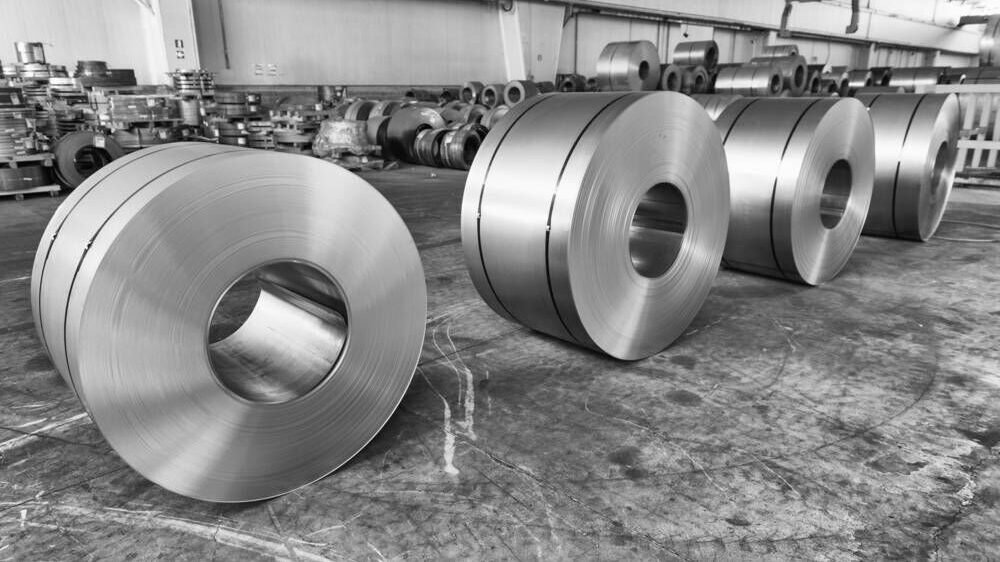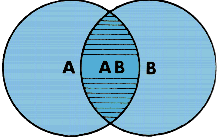Let’s begin by defining terms, which is the best way to ensure that we are all on the same page.
What Is Metal Stamping?
At the 30,000-foot view, metal stamping uses a die to shape/mold the part you wish to create. In the metal stamping process, a die is forced into a malleable metal with sufficient pressure to conform that metal to the shape of the die.

What Is Laser Cutting?
Laser cutting is a radically different process, which uses an extremely powerful, precisely guided laser to cut the metal into the desired shape of the part.

What Are the Factors Involved in Choosing One Over the Other?
Four factors will inform your choice. They are,
- Cost,
- Material,
- Time,
- Capabilities.
Let’s examine each of the above factors in order.
Cost
Cost is almost always the biggest factor considered in any business decision and choosing between metal stamping and laser cutting is no exception. The exotic nature of laser cutting may lead one to assume that it is the most expensive choice. However, other factors in play may prove this assumption to be untrue.
For example, metal stamping requires a unique die to be manufactured for the part/component being stamped. This takes time, and with complex geometries, even more time and greater expense. Upfront costs can be steep. In high-volume production runs, this expense may be easily justified because per-part-costs are relatively low. This may not, however, hold true for a small production run.
A small metal stamping run to produce a part with complex geometry, for example, is likely to incur significant per part expenses and long lead times because of the complexity of the die. In such a scenario, using a laser cutter may be the better option from a cost and lead time perspective.
The important takeaway is that you must take all variables into consideration in order to arrive at a sound decision.

Material
A component can be manufactured from any of a variety of materials. The material you choose will impact whether to use metal stamping or laser cutting. For our purposes, we will assume your chosen material was selected based upon careful consideration. We may address choosing material in another article, but not here… not today.
Let’s say you have a medium-sized production run using a very hard material, such as annealed and stress-relieved 430 stainless steel. As you know, tools and dies can wear quickly when forming such a metal, so maintenance and replacement costs must be a factor in your choice.
As we know, metal stamping is accomplished by mechanical force, which can cause microscopic fractures and/or stress marks. Sometimes this would be unacceptable for a component. Laser cutting, however, uses no mechanical force and does not create stress marks or fractures.
Material waste is another important consideration you must evaluate in making a choice between metal stamping and laser cutting. For example, when cutting shapes from a sheet of metal, the laser cutting method allows for a much closer proximity between cuts than does stamping. This important quality in laser cutting can reduce waste substantially.
Finishing is another consideration in making your choice. Materials that are stamped may have burrs or sharps, which will require further processing to address. Laser cutting, in contrast, leaves no sharps or burrs.

Time
Time and cost, while not interchangeable terms, have much in common, because time is money!
As you evaluate the pros and cons of one method over the other, time is a crucial factor. For example, when you are up against the clock, lead times can be shortened considerably by choosing the laser cutting option.
As mentioned earlier, time can also be conserved by using laser cutting because the method leaves no burrs or sharps, which means finishing time is reduced to zero.
Maintenance and down time may be reduced by using the laser cutting option. As we mentioned earlier, dies and tools experience wear, which require ongoing maintenance. Lasers do not wear out. This is an important factor, especially when a very hard metal is being used to create the component.
Capabilities
The capabilities of laser cutting vs. metal stamping may be best visualized using a Venn diagram. In the example below, “A” represents Laser Cutting, “B” represents Metal Stamping, and “AB” represents the overlap of their respective capabilities.

The diagram above illustrates why a choice must be made, because neither method is the optimum solution in every case. More to the point, even when either method may be capable of bringing about the desired result, you must consider the prudence of killing a mosquito with a cannon ball, when a fly swatter would do the job just as well.
There are certain things lasers cannot do, for example, bends! If your part requires a bend, laser cutting is not a viable solution. Metal stamping, on the other hand, can flatten, swage and coin metal. Adding a press brake also permits bends. However, it should be noted that bends can create structural weaknesses, particularly when the bend exceeds the limits of the metal’s internal radius, or if some improper motion occurs during the process, the metal might become brittle and easy to break.
Laser cutting places limitations on the thickness of the material being cut. This limitation may arise from the material’s hardness or its thickness. If the laser’s parameters are exceeded, spalling and/or distortion may result.
Because of the high temperatures involved in laser cutting, certain metals/alloys may suffer an alteration in their physical properties, which may affect the performance of the part. This is not an issue when you use metal stamping because force, not heat, is used to cut through the material.
The metal stamping machine, in combination with the press brake, is a versatile manufacturing process, capable of forming complex shapes, including precise bends at various angles. Complex geometries, especially those that include bends, may be best addressed using this tried & true equipment.

Making the Decision
I trust that after reading this article, you will understand the importance of taking all the aspects of manufacturing your part/component into account. Many variables must be considered, such as the metal/alloy used, the complexity of the part’s geometry, bends or no bends, target cost per part, overall budget considerations, and so on.
The choice between laser cutting and traditional metal stamping is complex, requiring careful thought and a thorough understanding of your end goal. My goal is to provide you, at the very least, a starting point for your thought process. Have I covered every contingency—probably not? However, if you understand the interplay of the variables and factors involved in making your decision, then I’ve done my job.
Closing Thoughts
Before deciding between laser cutting and metal stamping, I encourage you to read about each process to gain a thorough understanding of the costs, time, and capabilities of each method, especially regarding the material you plan to use.
Both methods are in daily use at thousands of manufacturing firms. Most times, both methods can accomplish the task, but you understand that each method has a unique set of benefits and drawbacks.
The expert and experienced staff here at Gold Precision stands ready to offer any help and guidance you might need, and we encourage you to contact us. Our talented team is always ready to help.




2 Responses
I liked it the most when you shared that the material’s hardness can affect laser cutting. My friend is handling a project that requires laser cutting. I should advise him to partner with a contractor with the right tools for the job.
I love that you talked that the thickness of the metal would be the base of the laser cutting limitation. The other night, my best friend told me he and his business partner were hoping to find a sheet metal cutting company that could offer a metal laser cutting process for their steel business products to be delivered. He asked if I had any thoughts on the best option to consider. I appreciate this helpful article. I’ll tell him that they could consult a trusted sheet metal cutting company as they can provide details about their services.